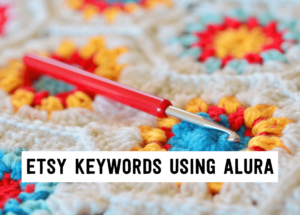
How to find the best Etsy keywords in 3 simple steps using Alura
If you want to be found in search results on Etsy, you need to optimize your product listing for SEO. And if you want to
join
join
Hello!
Welcome to the second video of this short series that for now I’ve called Member Stories. I’m still not quite sure about the name. . . actually if you have any suggestions on what I should call this series, comment below and let me know!
But if you are new here, welcome! Thank you for being here.
The Tizzit community launched three years ago, and in the last three years we’ve had many, many members and makers coming through our doors.
I thought it would be great to celebrate our three years by bringing some of these makers on camera and actually ask them how it’s going with their business and share those stories with you.
I think the most important thing for me with these interviews is to bring you some real, honest talk as to what it takes and what really happens when you start and grow a handmade business.
We’re going to be, of course, talking about what’s working and the successes that they’ve had.
But also, we’re going to be opening the conversation to what’s difficult and what’s not working, and what they’re still trying to figure out so that we can have an honest conversation about what it is and what it takes to run a business.
All the interviews that I’ve selected are different . . . the makers obviously sell different things, but they’re also at different stages of their journey.
Last week we had Wendy who’s more experienced. She runs a business full-time, and has been for a few years.
This week, we are talking to Milena. She is more in the starting-to-grow-a-business stage, and she opened it less than a year ago.
It’s a completely different conversation; you’ll see she also markets her products differently. I hope that you enjoy this conversation and feel inspired and supported as you listen to her business journey.
Milena is the creator/owner of Mana Studio and makes beautiful handmade macramé home decor creations.
Milena is originally from Switzerland but now lives in Mexico. She discovered macramé while working on her master’s thesis in architecture; macramé gave her a break from the brain-heavy work she was doing and provided some balance to her days. She looked up a few YouTube tutorials, gave it a try, and her love of macramé was born!
She enjoyed doing macramé, but it was just a hobby until years later after finishing her master’s thesis. Her part-time job left her with plenty of free time, and she started doing macramé again, learning more about the art and developing her skills.
One day she stumbled on a Tizzit video and thought:
“Wait. Wait. Are people doing this for a business? Do people live from stuff they make? . . . I am interested in this!”
She wasn’t feeling fulfilled at her job as an architect, and she had been wanting to have a business of her own for a long time – but she knew that she was too young to own her own architectural firm.
Once she read about people selling handmade products for a living, she knew she wanted to give it a go!
Milena joined the Tizzit Facebook group, and after a few days she decided to go all in: she signed up for Tizzit HQ and started learning!
Milena joined Tizzit in August of 2020, and spent the next few months working through the Dream and Start stages of the Maker’s Roadmap.
“I really did take my time to properly prepare everything; I didn’t rush into it. I opened my shop at the beginning of November.”
When you look at her website and Instagram feed you can see the results of working through the Maker’s Roadmap from the ground up and taking the time to establish a strong foundation is well worth it – her brand pictures and layout are impeccable and look very cohesive, like she has worked with a branding agency.
Milena said her education in architecture has helped her know how important presentation is:
“It’s so important the way you present your project. . . if you have a good project, but it just looks ugly and nobody wants to look at it. . . [vs] the other way around, if you have a really nice representation and know how to sell your project and how to talk about it, people will be intrigued.”
Perceived value is important in Milena’s handmade business because she has to factor in a high shipping cost from Mexico to her customers, most of whom live in the U.S.
She knows that she has to create a high perceived value in order to set prices that are profitable and that pay her for the time it takes to create her products.
Something that Milena said really struck me as being so SO important, and it’s something that many new business owners don’t realize is part of building a successful business.
We discussed how hard it can be to develop confidence in yourself and in your products:
“I feel like developing a business has been basically developing my personality, personal growth, even more than business profit probably because you just get confronted with all of your limiting beliefs and fears, and fear that you’re not enough and your product is not enough . . . It’s such a horrible feeling . . .
If I could just have unlimited confidence in myself, my business will probably be like whooo!”
I wish I could tell all the makers I work with that feeling will go away, but it just doesn’t. You just become so much better at managing those thoughts, but they keep coming. Every new level of business brings its own little monster thoughts that come at you and just go, “Are you sure? This is not good. Na, na, na.” Those little old nagging voices; I have heaps in my head when I work too! You just listen to them and go, “Okay. You’re here. You’re annoying. Go away. Let me do my thing.” You just become better at managing them.
One place that confidence is essential is when you set your price. I love how Milena described the pricing dilemma many makers face:
“Basically, a price is what it’s worth, right? You’re putting a worth in a dollar amount on things that you make with your hands and your time and your ideas, and your heart, and everything. It’s like putting a price tag on yourself in a way, and that’s so hard.”
It’s hard not to compare yourself and your products to others, too, which makes you worry even more. But, as I always tell my Tizzit HQ community, you really can’t afford to not have a lot of profit.
When you work on your confidence, you empower yourself to price your product fairly and to feel OK about it.
You have to remember who your ideal customer is. And – that you are not necessarily your ideal customer.
Just because you don’t have an income that lets you buy high quality expensive furniture and decor for your house doesn’t mean that others don’t! And those people – your ideal customer – DO like to buy expensive decor and will value your product literally because you price it at a level that fits their image of what they want for their house.
When you make pricing decisions, in addition to figuring out the numbers that make your business profitable, you need to get out of your head essentially and think about your price from your ideal customer’s viewpoint.

e-com sales on tap training
simple step-by-step plan to grow your online store sales into a consistent and predictable income with the Reliable eCom Sales System
As Milena worked her way through the Tizzit HQ courses, she decided she needed to raise her prices in order to cover her costs and pay herself a decent wage for the work she put into making her products (and can I just say BRAVO! for that, you all know that it’s very important to me that makers set prices that pay them a fair wage).
I asked Milena to tell me about her pricing journey:
“I watched a video of yours actually, on YouTube. It was about like, ‘Okay. You decided you are going to put up your prices, but now how are you going to communicate it?’
You brought up this idea of putting the price up, and then putting it on sale so that it matches your current prices again, which is a way to give people a chance to still buy at your current prices, but at the same time realize, ‘Oh. It’s actually worth more, so I’m actually getting a good deal out of it.'”
She sent an email to her email list that talked about the value behind her business; how she chooses quality materials and suppliers.
At the end she announced she would be raising her prices soon, but that they still had two weeks to shop at the current prices.
Sending that email was hard. She took a deep breath, and . . .
“I just sent it. I was like, ‘Oh, my God! Oh, my God! Everybody’s going to unsubscribe!’ “
At the same time that she raised her prices, she started to focus more on one of her newer products, plant hangers.
Milena has been selling for about a year now, and she is a great example of how the products you sell evolve as you grow and learn what works and what doesn’t.
When her business began Milena made beautiful wall hangings – pieces of art, really.
When she raised her prices, she also started making a new product – plant hangers. And her sales started to come more from plant hangers and less from wall hangings.
Milena said that she feels like she has now moved into the growth stage of the Maker’s Roadmap and is re-evaluating her products and business model as she works her way through this stage.
“I’ve been like, “Okay. Well, and now what?
You have this image. . . you show it in a lot of videos . . . where people think success is this line, but actually it’s up and down. Then, there’s a loop maybe. This is it. In the end, it’s still going up, but it’s been a wild journey. I feel like I am in a loop right now, the backwards loop just before it goes up again; that’s where I feel I’m at.”
I’m so glad Milena can talk about this process and that others can see her journey and relate to her thoughts.
This journey of continually adjusting and creating and refining our business is beautiful and is so healthy and normal.
It’s a natural progression of deciding what you’re going to sell exactly: you might start with an idea that’s like, “Okay. I’m going to do wall hangings.”
Then you’re like, “Am I? Or maybe I’m going to do plant hangers.”
Then, you look at what is working and what you would like to change, and you start to think, “Wait – would doing something a bit differently be a better fit for my goals and my life?”
It can feel like a hot mess, but it’s normal, a normal evolution that businesses go through..
I think we need to speak about this because I think there’s a lot of people out there who go through this thinking, “I don’t know what I’m doing; so I must not be good. I’m just going to stop because I can’t decide what exactly to sell.”
It’s important to remember that it’s not going to be perfect in year 1 – in fact – you’re probably still going to change your mind in year 10!
And that is where Milena is at, and she is letting herself “think the thoughts” that can lead to wonderful changes and improvements in her business.
“Maybe I want to tweak some things. Maybe I want to slightly pivot, or sell something else. But that [wouldn’t be] my signature style anymore that I tried to come up with for so long. . . ”
The thought of changing your business, and changing the signature style or product that you built your business around when you first started, is scary and can make it hard to take a leap of faith and make those changes and move forward.
“I’m like, “What? What am I doing?” I feel really stuck . . .
That’s exactly what I feel is my problem again, just making the first step. I feel like I’m at this point again where I just have to push myself over the edge. Just start something. I don’t have to have it all figured out, which I would like to, but it’s just not possible. But I’m missing this push somehow!”
This is where being a part of a community like Tizzit HQ can help, you are surrounded by wonderful caring people that will cheer for you and give you that “push” to try new things with your business. Without cheerleaders, navigating the ups and downs of business ownership can be very lonely and overwhelming.
Milena’s current marketing strategy focuses on Instagram, which she loves because it’s such a personal platform:
“I’ve been very lucky to have developed a lot of personal relationships and friendships with my customers. Sometimes, they were first friends and then became customers. Or they were customers and then became friends. I feel like I’m so connected to a lot of people.”
For Milena, Instagram helps her find what she has in common with her customers, even though they might lead very different lives. It takes a situation where two people might not connect, or relate, and turns it into a real connection that is based on the similarities that they discover.
“Imagine [selling] to someone who’s very different from myself, out of my league to say, at least financially. It’s like, “How do I even talk to these people?” That’s hard. If your ideal customer is a lot different from yourself, I feel like it’s tough to know how to speak to them or how to talk to them because you’re just not that person.
Whereas if they’re similar to yourself, you’re just talking to a friend. That’s easy, right, because you’re used to it.”
Instagram has been a powerful tool for Milena because she and her customers quickly discover their similarities and develop a connection:
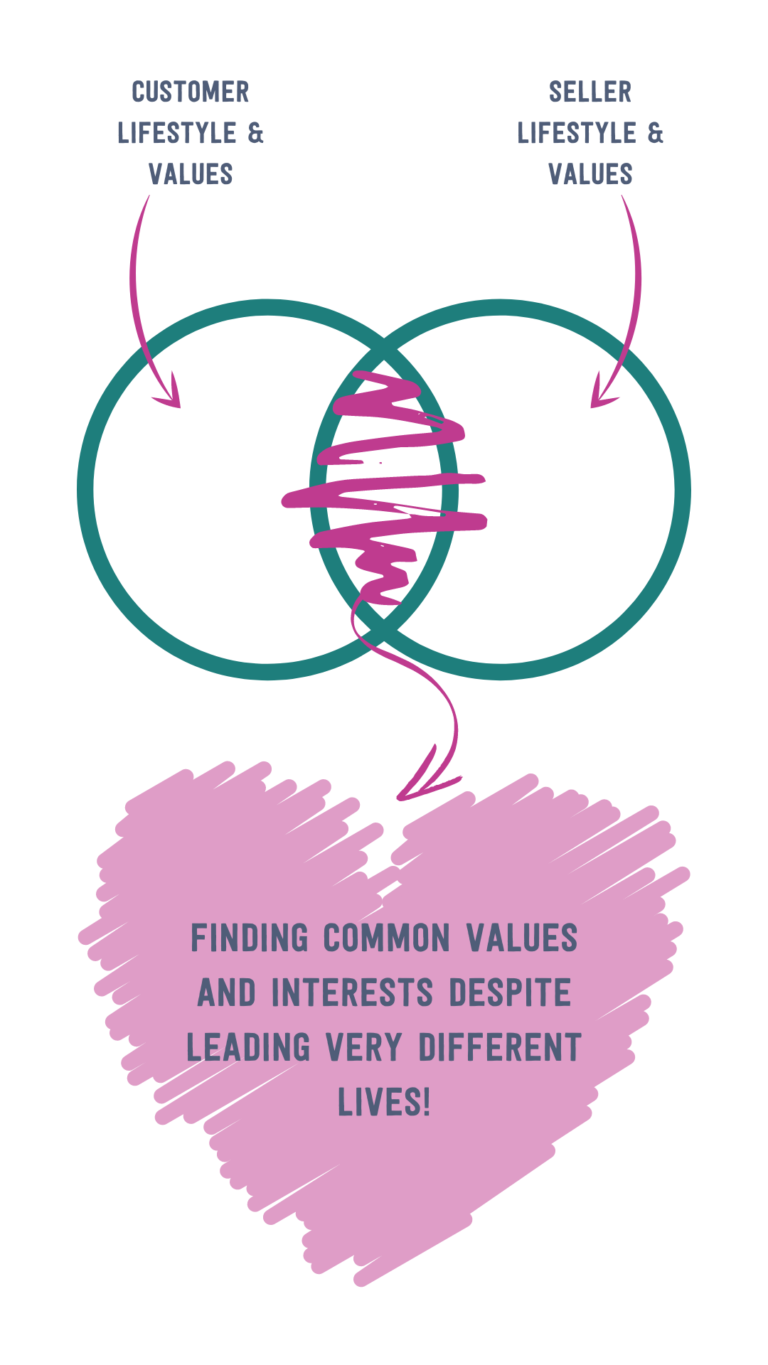
Milena used Instagram to launch her plant hangers when she added them to her product line.
She introduced a new design each day, ending the week with a final launch video saying “They’re here, now you can buy them!”
She also put teasers on her Instagram that her email list would get a launch discount – SMART!!- and got quite a few sign-ups from this.
Between her smart strategy, and her professionally looking Instagram layout, her launch was a success!
And since then, her plant hangers have continued to sell well.
Because shipping is costly from Mexico, she came up with the brilliant idea of offering sets of three, which helps distribute/offset the shipping cost.
She also has jumped into the Instagram world of Reels, and quite successfully! I asked Milena to talk about her experience with Reels, and we commiserated about how some Reels – that you think are awesome and will do well – don’t do as well as you hoped, while others that you thought were so-so will take off:
“Some reels will gain a lot of traction . . . like the reels that you thought were going to be the worst ones suddenly start picking up. Sometimes, what happens is that for the first few days, you see a couple of views, maybe 1,000, 2,000 views. Then, it stays like that for weeks. Then all of a sudden, sometimes an old reel just starts picking up again and goes 5,000, 7,000, 10,000, 20,000. You’re like, “Whoa whoa whoa! Wait. What’s happening?” That can also happen. You don’t really have control over these things.”
I think in business we all learn that you control the input but you don’t control the output.
It’s a difficult lesson to learn because we work hard and we put in a lot of effort. Not only in the products, but also into marketing.
It’s almost like there’s this little part of us that’s always expecting that it’s going to be balanced with the results.
You’re like, “I’m working real hard, so I will get really good results.”
And we learn that we have to detach ourselves from the results of any one thing and look at the big picture.
Milena said she thinks of it like the stock market: you know the stock market will go up and down. And one thing you know is, you don’t pull all your money out the minute the market goes down. You wait, and usually if you wait long enough it’s going to go up again – sometimes you have to sit out the bad times, and not quit when you’re down.
Her analogy reminded me of a story I heard on a Podcast that I co-host called The Business of Making. Co-host Mikaela Danvers told a story about one of her kids that wanted to stop playing soccer after a game that didn’t go well. Her response?
She told him (not a real quote but that was the idea) => “No problem. You can absolutely stop soccer, I’m all for it. I don’t want to force you to do something you don’t enjoy. But . . . you also had a bad day on the field today; so you’re not allowed to quit on a bad day. If tomorrow you have a good day, and you still want to quit, then cool.”
Just like the stock market and the soccer player, make your decisions based on overall trends and overall feelings; never because of one bad day.
Milena and I also talked about how social media exhaustion can sneak up on you.
Because of the nature of the platform, Instagram will always welcome more interaction. It will never stop saying, “Ey. You’ve given me enough right now.” It will want more. You can give it your all, and it will still be like, “I want more.”
That means you have to set boundaries for yourself because it is demanding and it is draining if you don’t set those healthy limits.
Milena is still working to find the right balance for her.
She has done really well on Instagram, and sees the result of her hard work. But she found out the hard way how easy it is to say “just one more thing” and keep doing more, and more, and more.
For example:
Milena tried making one reel a day. It worked splendidly to sell her products, but she started to feel exhausted. She debated taking a social media break, but she had her plant hanger launch planned, so kept pushing. Then after the launch, she told herself “you can’t launch something and then disappear,” so she kept going. . .
You can see how social media exhaustion can sneak up on you.
Today, she is trying to set more boundaries and find an Instagram strategy that keeps her in balance and not burnt out.
She’s checking her insights and stats less often, and focusing on trends over time. (this is a great point for any social media – checking stats constantly is stressful and tiring!)
And she is learning from experience what is “too much” (a Reel a day), and what things get the best results.
In the long run, knowing what didn’t work can be as much if not more help in deciding on a strategy that you can be consistent at.
Because if you’re going to be consistent with something, it has to be sustainable . . . that’s the kind of marketing strategy you want to build.
If it’s not sustainable, that’s not healthy and not the way to run a business.
For Milena, one of the favorite parts of her business is the personal growth she has experienced, and continues to experience every day:
“I love learning about myself in the process and understanding where I have some road blocks in myself, not necessarily the business.
Sometimes I feel like, “Oh! My business has this problem.” But then, I’m like, “Oh, no. Actually I have this problem.” That’s something internal that I have to get over, it’s just these thoughts stuck in my head. It’s not actually my business.
My business is not the problem; it’s myself sometimes. That’s very interesting. It’s tough, but it’s really a lot of learning involved. I like that.
Milena also really enjoys the versatility and variety of owning her own business:
“I hate doing the same thing all day long everyday . . . that’s so boring for me. Running a business just involves so many different things and so many things that I have no clue about, or have never done before in my life. It’s just like a constant learning progress basically.
So many different things you have to get into or keep track of, and do marketing, but also designing collections. Then making and then selling, and then shipping. Some parts are more enjoyable than others obviously, but I just really like to have it all somehow, to have to do it all, and have to learn it all. It’s never boring for sure.”
When asked to reflect what success is for her, many things popped into her head:
“Well, being able to do what I really like to do and enjoy doing, and being rewarded for it, being appreciated for it, being able to make a positive impact in other people’s lives. (Also, being paid for it!)
Also, ideally taking this beyond myself. As I said before, making this positive impact on maybe other suppliers, collaborators, and your customers. . . .
My business gives me an opportunity to connect on a deeper level to many other makers, my customers. . . then, improve someone else’s life with this thing that I made. That’s just great.”
At the end of our interview, Milena shared what she has learned, and I really think it’s a beautiful piece of advice for anyone who has their own handmade business:
“I just have to be not so serious about it sometimes. Just see it with a little bit more playfulness, I think also. Just trying stuff out. Some things don’t work, and that’s okay!”
A HUGE thank you to Milena for sharing her story about her first year in business. The first year is full of ups and downs and tough decisions and I’m so grateful to her for sharing hers so that other makers can benefit from her lessons and her journey.
I’m incredibly grateful to have people like her inside of the community that are so active and supporting and kind, and who give so much great advice and feedback.
I hope those of you reading this will walk away feeling more confident about all the ups and downs you have gone through – and will go through – in your own business, and will remember the importance of creating your business in a way that is a good fit for you and for your products.
If you haven’t joined us inside Tizzit HQ I hope this interview helped you appreciate that you SHOULD!! Come over and check it out all that Tizzit HQ has to offer:

watch this free 15-min training
and learn how to scale your website sales (without working around the clock or spending 24/7 marketing on social media)
I hope you enjoyed this “Members’ stories” interview, there are more to come!
Thanks for reading and until next time, au revoir!
you might also like…
related articles

If you want to be found in search results on Etsy, you need to optimize your product listing for SEO. And if you want to
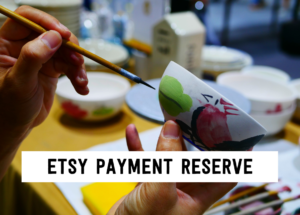
There has been a lot of talk in the Etsy community — and I mean A LOT of talk — about Etsy’s payment account reserve
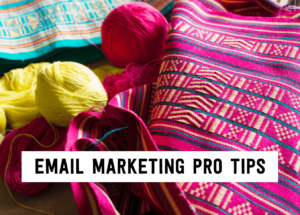
Anyone who knows me knows that I am a HUGE advocate for using email marketing to grow and scale your handmade business. But you may
disclaimer
subscribe to youtube
THE LAUNCHPAD
get in touch
We acknowledge and give thanks to the Budawang and Yuin people, the Traditional Owners of the land we work and live on. We pay our respects to all Aboriginal and Torres Strait Islander Peoples and elders past, present and emerging.
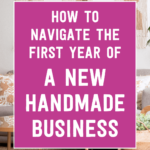


learn how to grow your online store sales into a consistent and predictable income

learn how to scale your website sales (without working 24/7)